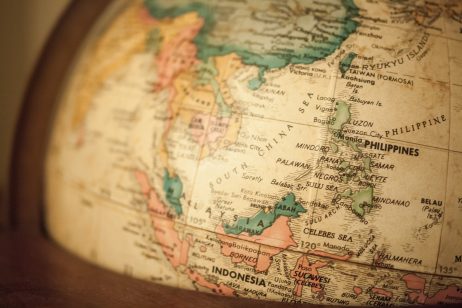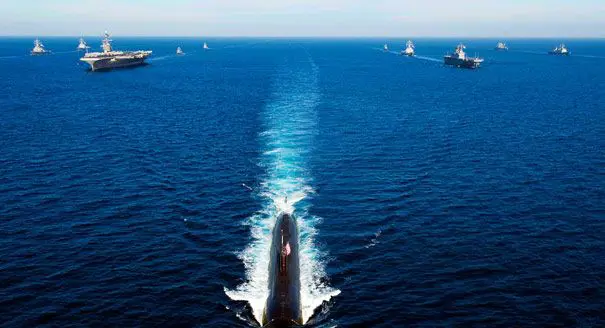
| Published July 12, 2025
The Permanent Court of Arbitration did not decide the claims brought by the Philippines against China, an arbitral tribunal established under Annex VII of UNCLOS did.
🧭 The Core Misconception: What the Philippines Sued Over – and What It Didn’t
Main point: The article argues that many observers mistakenly believe the Philippines’ 2013 arbitration case against China was a bid to claim sovereignty over islands in the South China Sea. In reality, it’s much more nuanced.
1. It was a legal fight over maritime rights—not land sovereignty
-
Under UNCLOS, the arbitration focused on whether China’s expansive “nine-dash line” and island-building activities violated the Philippines’ marine entitlements—its territorial sea and exclusive economic zone—not whether specific islands belonged to either side.
-
The tribunal sidestepped sovereignty and boundary demarcation over land features. It was strictly about maritime rights and legal interpretations under UNCLOS.
2. Misunderstandings stem from ignoring the legal framing
-
A key misconception arises when the public and media interpret the case as a “battle for islands.” The article emphasizes that Manila deliberately avoided bringing sovereignty or land boundary claims—even for features it occupies in the Spratlys.
-
This framing was strategic: focusing on UNCLOS ensured the tribunal’s authority and avoided unpredictable interpretations that could weaken the Philippines’ legal position.
⚖️ Why This Legal Strategy Matters
A. International law can balance might
-
The Philippines’ position was that UNCLOS serves as an equalizing force: smaller maritime powers can invoke legal mechanisms to check coastal bullying.
-
But this approach has limits. It clarifies rights—it does not enforce them. As the article notes, legal victories only matter if countries like China feel obligated to respect them—and China has refused to comply.
B. Domino effect on discourse and strategy
-
By avoiding sovereignty claims, the arbitration didn’t threaten other Southeast Asian claimants—thus minimizing backlash within ASEAN .
-
At the same time, it fueled Manila’s “transparency initiative”—publishing incidents at sea involving water cannon use, ramming, and lasers—to build international pressure and document coercion.
🌊 Symbolic Victory, Complex Reality
-
The Philippines’ 2016 victory at the Permanent Court of Arbitration was a historic win on paper, but the reality at sea remains harsh and unchanged.
The tribunal ruled in favor of the Philippines, declaring China’s expansive “nine-dash line” had no legal basis and that the Philippines has rightful control over its Exclusive Economic Zone (EEZ) under international law (UNCLOS). This was a major diplomatic and legal victory, giving the Philippines moral high ground in global discussions.
However, China has refused to recognize or follow the ruling. It continues its island-building, harassment of Filipino fishermen, and aggressive patrols in waters legally recognized as part of the Philippines’ EEZ. The international tribunal has no enforcement power—so while the ruling clarified the law, it didn’t change behavior on the ground (or in this case, at sea).
That’s why the ruling is often called a “symbolic victory”—a strong legal and moral position that the Philippines can use in diplomatic efforts, international forums, and public awareness campaigns. It has helped Manila rally global support and apply pressure on China through what’s called a “transparency initiative”—publicizing every aggressive act China commits in Philippine waters.
Still, the reality is this: legal victory does not guarantee territorial security. Without military force or strong international enforcement, the Philippines must rely on alliances (like with the U.S. and Japan), international diplomacy, and public pressure to protect its rights.
In short, the Philippines won the legal battle—but the broader geopolitical struggle is far from over.

The so-called South China Sea arbitration of 2016, initiated unilaterally by the Philippines, has triggered “a myriad of problems” for the country, economically, diplomatically and regionally, one expert has said.
 Implications:
Implications:
Here are the key implications of the Philippines’ 2016 legal victory over China in the South China Sea arbitration—and why it still matters today, despite China ignoring the ruling:
🌍 1. Stronger Legal Standing for the Philippines
-
The ruling gave the Philippines international legal clarity on its rights to its Exclusive Economic Zone (EEZ).
-
It sets a precedent that historic claims like China’s “nine-dash line” have no weight under UNCLOS (United Nations Convention on the Law of the Sea).
-
Other Southeast Asian countries can cite the ruling as a reference for their own maritime claims.
⚖️ 2. Legal vs. Practical Power
-
Despite the win, the Philippines cannot enforce the ruling militarily.
-
China continues to act aggressively in the area—harassing fishermen, blocking resupply missions, and building artificial islands.
-
This shows the limits of international law without enforcement mechanisms.
🇵🇭 3. Diplomatic Leverage for the Philippines
-
The ruling became a tool for international diplomacy. The Philippines can raise the issue in global forums and gain support from countries like the U.S., Japan, Australia, and the EU.
-
It enhances the Philippines’ credibility and moral high ground in the ongoing maritime dispute.
🤝 4. Closer Military and Strategic Ties
-
The situation has pushed the Philippines to strengthen alliances, especially with the U.S. through EDCA (Enhanced Defense Cooperation Agreement), and new cooperation with Japan and Australia.
-
This leads to joint patrols, military aid, and naval presence—counterbalancing China’s pressure.
📢 5. Increased Transparency and Public Support
-
The government now uses a “transparency initiative”—publishing videos and photos of Chinese harassment to expose their activities to the world.
-
This not only informs Filipinos but also gains sympathy and backing from the international community.
💥 6. Regional Security Tensions
-
The ruling intensified great power rivalry in the region, especially between the U.S. and China.
-
It highlights that legal victories don’t always mean peace, and tensions could still escalate.
 Overall Takeaway: Legal Win, Ongoing Challenge
Overall Takeaway: Legal Win, Ongoing Challenge
The Philippines’ 2016 victory against China at the international tribunal was a landmark legal success—it clarified the country’s maritime rights and invalidated China’s sweeping “nine-dash line” claims. However, this ruling was symbolic, not enforceable, and China continues to ignore it.
The case gave the Philippines legal leverage, global support, and moral authority, but not control on the water. In reality, the struggle has shifted from the courtroom to diplomacy, alliance-building, and strategic messaging.
In short, the arbitration ruling was not the end of the conflict—it was the beginning of a more complex and ongoing battle to assert sovereignty, maintain stability, and protect national interests in the West Philippine Sea.





Be the first to comment